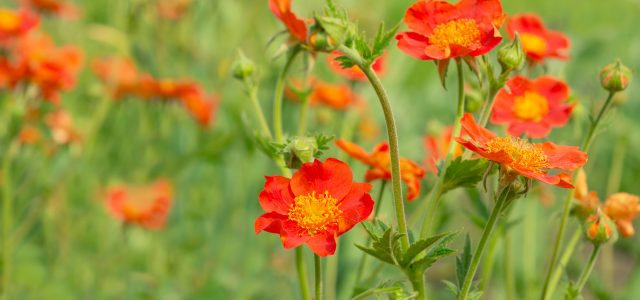
Blooming Lovely
May is a marvellous month when the garden is blooming, plants are beginning to flower and show their true colours and it’s the RHS Chelsea Flower Show
We may not all have award-winning gardens, but our outside space is beginning to come into its own again at this time of year – to be enjoyed by friends and family.
Although alfresco living and entertaining is just around the corner, every garden has its share of unwelcome guests – pests that can eat their way through newly planted flower and veg beds in one sitting. However, instead of choosing chemicals to deal with the problem, try to create an ecosystem that encourages natural predators to keep the pest population at bay.
So, thrifty tip for the month is to work with nature to help your garden establish its own healthy balance. Populate it with plenty of pollinator plants to encourage hoverflies, the larvae of which will eat aphids and caterpillars – fennel, ivy and verbena bonariensis are particularly good. Encourage birds into the garden as they will eat insect pests and slugs, so hang bird feeders and plant berry producing plants such as honeysuckle, roses and rowan. Deter snails and slugs by removing their habitats such as piles of pots and check regularly down the side of raised beds.
If natural prevention doesn’t work you could try some organic solutions such as hand picking pests off plants, or spraying with a powerful hose. Another option is using a soapy water spray – simply fill up a hand spray with a weak solution of biodegradable washing up liquid (no more than a couple of squirts of liquid at a time). Slugs hate coffee granules, sawdust and salt – so sprinkle liberally around plants. If you have a large slug problem you can always water in nematodes (eelworms) as a biological control.
As summer approaches and borders start to grow in leaps and bounds, planting out bedding can begin and for many gardeners the hardy geranium is a reliable option. As the RHS (Royal Horticultural Society) says, geraniums have excellent wildlife value along with flowers that attract pollinators. Their seed heads are loved by finches and their foliage gives shelter to insects, plus they come in an array of varieties and colours.
Another popular choice for a great pop of floral colour are geums – dependable, traditional, hardy garden favourites valued for vibrant displays in late spring and summer. They tend to be easy to grow, don’t need much maintenance and are mainly problem free. Deadheading can help them produce more flowers and large plants can be easily split in the winter and replanted. Hybrid varieties have long flowering seasons and can tolerate most growing conditions. Geums also provide a garden with masses of hot colour from spring to early autumn – which is loved not only by gardeners but also by pollinators. Go-to varieties include newcomer Totally Tangerine with single, soft orange flowers from late spring to autumn, established favourite Mrs J Bradshaw with semi-double red flowers and bright yellow Custard Tart.
RHS GARDENER’S MAY CHECKLIST
• Prune early flowering shrubs
• Plant strawberry runners
• Sow next year’s flowers
• Prune clematis montana
• Tie in sweet peas
• Keep hoeing weeds
• Sow more vegetables
• Plant herbs

